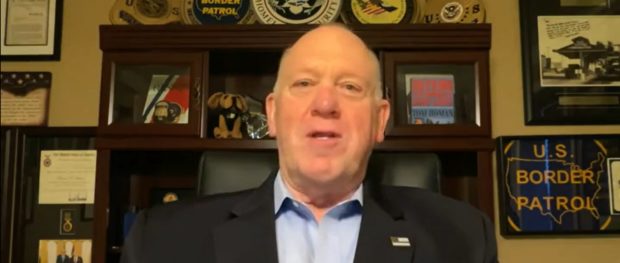Big Brother is watching you in Boston.
The city’s first annual surveillance report highlighted an array of ways the Boston Police Department uses technology to detect and prevent crime, including, but not limited to, the use of cameras throughout neighborhoods, cell phone monitoring, body-worn cameras on officers and automated license plate readers.
Boston Mayor Michelle Wu, who submitted the 92-page report to the City Council for review earlier this month, said Monday that the technology is crucial to keeping residents safe, and documenting instances of potential police misconduct through the use of body-worn cameras.
The report, borne out of a 2021 city ordinance that Wu co-authored during her time on the Council, seeks to remedy privacy and lack of transparency concerns that had been dogging the police department for years, in terms of the public largely being unaware as to what extent their everyday interactions were being monitored.
“We had many, many years of advocacy from community organizations and residents who had been completely in the dark about what was available, what was being used, and the protections or privacy parameters that might be on any of the technologies,” Wu said on WBUR’s Radio Boston. “The point of that legislation was to say we want to be safe.
“We know that the tools to enforce public safety are changing all the time and we want to be a department that is ahead of the curve,” the mayor said. “And if there’s something that can make us safer, to be able to know what that is and use it if it makes sense, but that the public should also have full awareness and feedback on whether to use it, and if it is used, how it is deployed and what the protections are.”
The report revealed that the police department maintains a network of roughly 1,300 cameras throughout the city, which are attached to light poles, street signs and buildings, and has direct access to another 400 cameras owned and maintained by the city and the Boston Transportation Department.
The neighborhood cameras capture video only, meaning that they don’t have audio detection capabilities, and are crucial to deterring and identifying criminal activity and suspects, gathering evidence and reducing fear of crime, the report contends.
The police department also uses a computer-based system that deploys special fixed cameras to take digital images of license plates and motor vehicles. The information is compared to “vehicle of interest” lists generated by law enforcement agencies.
The police department further uses technology to monitor cell phone activity for the purpose of GPS tracking, according to the report.
The report largely made a pitch for the effectiveness of surveillance technology, including ShotSpotter, a gunshot detection system that has drawn criticism from the American Civil Liberties Union and several city councilors over bias in how it’s largely deployed in communities of color, while playing down potential civil rights or privacy violations.
It did, however, point to the limitations that have been seen with certain methods, like body-worn cameras.
One particular audit that randomly reviewed roughly 966 Boston police officers found that during fiscal year 2022, 10% of those officers failed to comply with certain rules around body-worn cameras — such as failing to record events, starting to record events late or ending the recording early, and not uploading the video immediately after their tour of duty.
The City Council will review the surveillance report and the ShotSpotter technology in particular in two separate hearings on July 31.
Originally Published:







